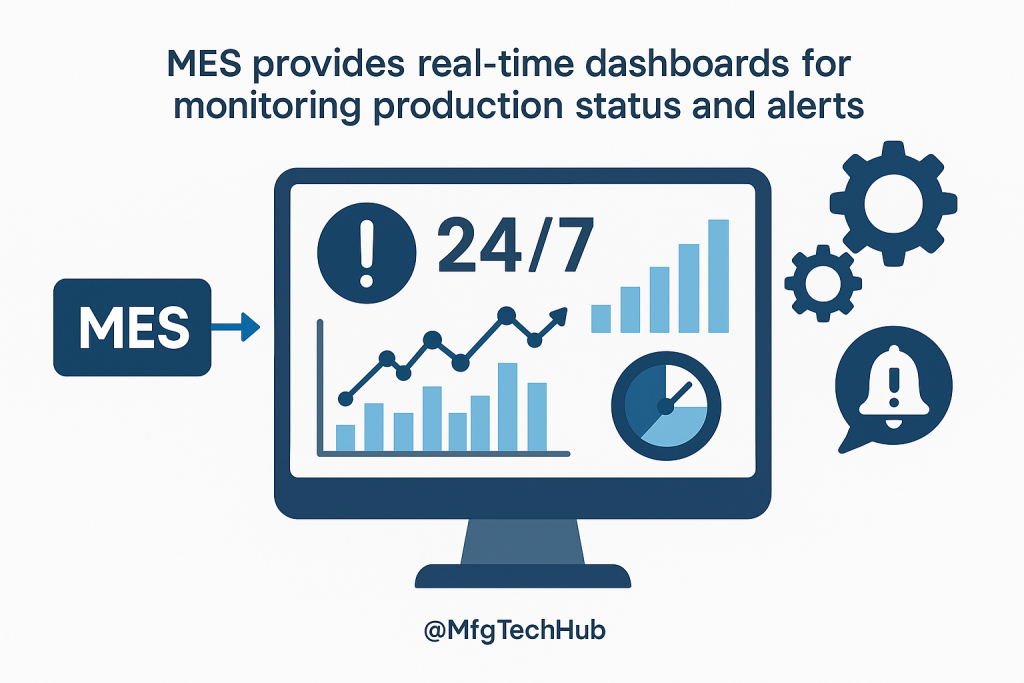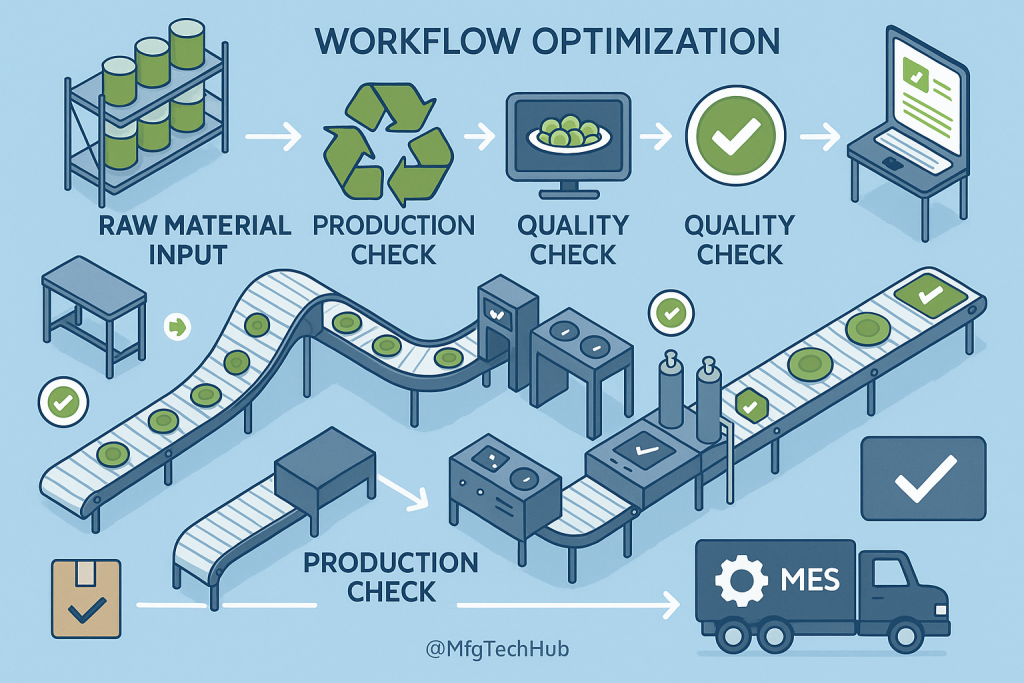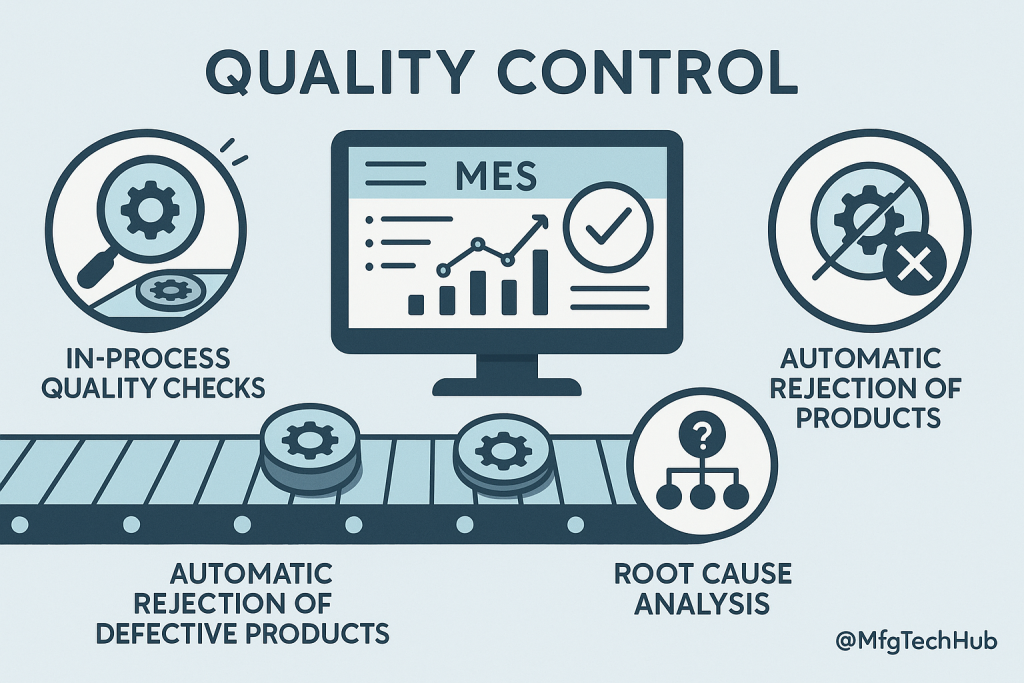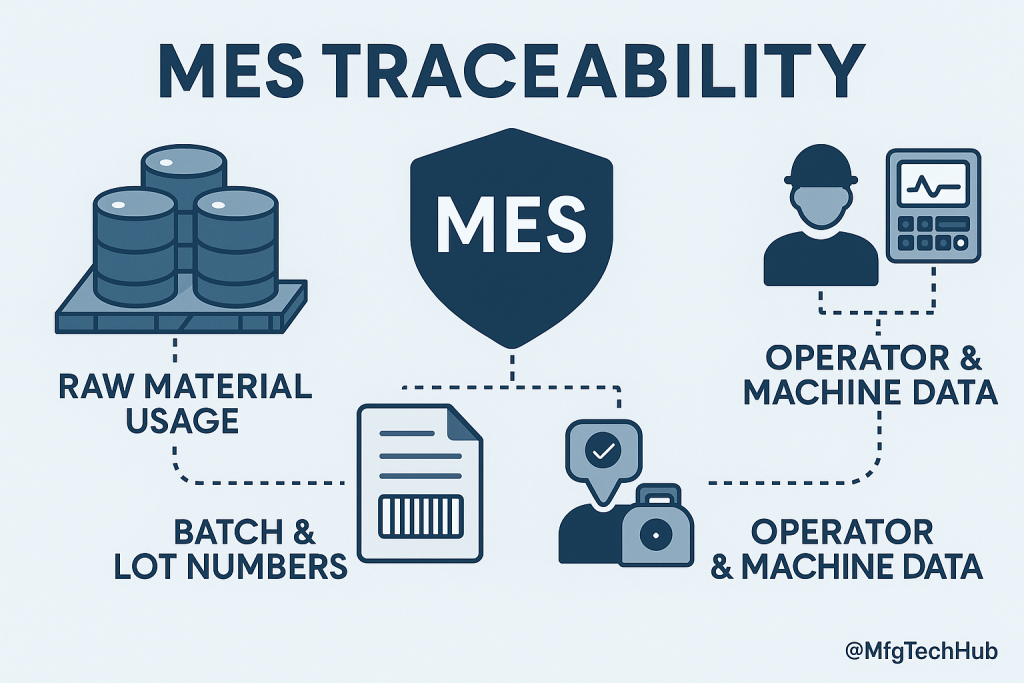The Importance of MES in Manufacturing
In today’s competitive manufacturing environment, success depends on much more than simply producing goods. Manufacturers must achieve high efficiency, maintain exceptional product quality, ensure full traceability, and adapt rapidly to changing market demands. This is where a Manufacturing Execution System (MES) becomes indispensable. MES acts as the critical, real-time link between enterprise planning and shop-floor execution, providing a single source of truth for what is scheduled, what is running, and what should improve next. By digitizing production workflows, capturing granular data from machines and people, and enforcing standard operating procedures, MES transforms how production is monitored, controlled, and optimized across shifts, lines, and sites.
What is MES?
A Manufacturing Execution System (MES) is a real-time production management platform designed to monitor, track, and optimize manufacturing processes end-to-end. It bridges enterprise systems such as ERP with operational control systems like SCADA, PLCs, historians, and IIoT devices. MES collects time-stamped data directly from machines, operators, and sensors; reconciles that data with orders, bills of materials, and specifications; and then feeds insights back to supervisors and planners. Typical capabilities include electronic work instructions, order dispatching, WIP tracking, quality checks, genealogy and traceability, performance/OEE analytics, and exception handling. In practical terms, MES turns raw plant activity into actionable information that continuously improves throughput and compliance.
The Critical Role of MES in Manufacturing / MES Importance in Manufacturing
1. Real-Time Visibility and Control

Real-time visibility is the foundation of stable, predictable operations. MES aggregates machine states, order status, quality results, and labor activity into configurable dashboards and andon-style alerts. Supervisors can see whether each order is on plan, which constraint is limiting output, and where rework or changeovers are building delay. Because the data is captured automatically, teams spend less time collecting numbers and more time acting on them. With this live view, plants can rebalance loads between lines, adjust takt times, and prioritize maintenance without waiting for end-of-shift reports. The result is faster issue resolution, fewer surprises, and a culture of evidence-based decision-making.
- Monitor production progress against schedules and customer due dates.
- Identify and resolve bottlenecks immediately using alarms and root-cause notes.
- Dynamically adjust workflows and staffing based on real-time conditions.
2. Enhancing Efficiency

MES improves productivity by orchestrating the right job, on the right asset, at the right time. Finite scheduling balances machine availability, tooling, and labor skills to create executable plans, while electronic dispatching keeps operators focused on the next best task. Downtime events are timestamped and classified at the source, helping maintenance teams attack chronic losses. Standardized work instructions reduce variability between shifts and new hires, and automatic data capture removes manual recording overhead. By combining these elements with OEE analytics, manufacturers uncover hidden capacity, optimize changeovers, and convert incremental gains into measurable output and cost reduction across the plant.
- Automated job sequencing and changeover optimization reduce idle time.
- Real-time performance tracking highlights underperforming assets and cells.
- Standardized digital work instructions sustain best practices at scale.
3. Improving Product Quality

Quality cannot be inspected in at the end; it must be built in at every step. MES enforces in-process checks, SPC rules, and automated holds whenever readings drift from control limits. Non-conforming material is isolated instantly, and electronic defect codes make patterns visible across lots and shifts. Because the system links results to orders, components, tools, and parameters, engineers can run fast root-cause analysis, correlate failures to specific machines or settings, and push corrective actions back into standard work. Over time, this closes the loop between engineering and operations, driving fewer escapes, lower rework, and stronger customer confidence.
- In-process quality checks catch defects early and prevent downstream waste.
- Automatic holds and defect routing ensure only conforming product moves forward.
- Genealogy and parameter history accelerate root-cause analysis and CAPA.
4. Seamless Traceability

Traceability is essential for regulated industries and brands with strict warranty or safety obligations. MES records complete product genealogy: which materials and vendors were used, on which lines and tools, by which operators, with which process parameters. If a supplier notifies a risk or a field failure occurs, teams can identify impacted serials in minutes and execute targeted containment instead of broad recalls. Beyond compliance, this rich history fuels continuous improvement—revealing the combinations of settings, lots, and machines that deliver the most stable quality and yield, so that best conditions become the new standard across the plant.
- Track raw material usage, supplier lots, and expiration or potency windows.
- Capture batch/serial numbers with operator, machine, and shift context.
- Enable fast, surgical recalls and warranty investigations.
5. Facilitating Industry 4.0 Adoption
MES is the backbone of smart manufacturing because it normalizes and contextualizes data flowing from IIoT devices, PLCs, and edge gateways. With consistent models for equipment, products, and processes, MES can publish clean data to analytics, digital twins, and AI/ML services. Predictive maintenance models reduce unplanned downtime; closed-loop quality automatically tunes processes; and digital twins allow engineers to simulate changes before committing to the line. As initiatives scale, MES provides governance—roles, approvals, versioning, and cyber-security—so innovation does not compromise safety or compliance. In short, MES converts disparate technologies into a cohesive, value-creating operating system for the factory.
- IoT: Streams contextual machine and sensor data to dashboards and historians.
- AI/ML: Applies predictive analytics for maintenance, quality, and scheduling.
- Digital Twins: Simulates process changes and validates capacity scenarios safely.
Key Benefits of MES in Manufacturing
| Benefit | Description |
|---|---|
| Improved Efficiency | Streamlines workflows, reduces changeover losses, and minimizes downtime through real-time scheduling and automated data capture. |
| Better Decision-Making | Provides live KPIs and root-cause context so leaders act on facts, not lagging spreadsheets or anecdotes. |
| Higher Product Quality | Builds quality in with in-process checks, SPC, and automated holds to prevent non-conforming product from advancing. |
| Regulatory Compliance | Captures complete electronic records for audits (genealogy, eBR, signatures), simplifying validation and reporting. |
| Cost Savings | Reduces scrap and rework, reveals hidden capacity, and lowers administrative effort for data collection and reporting. |
| Enhanced Collaboration | Connects engineering, quality, maintenance, and operations with a shared, real-time view of orders and performance. |
Real-World Applications of MES
- Automotive: Tracks part assemblies, torque verification, and process parameters, ensuring warranty compliance and enabling targeted field actions.
- Pharmaceuticals: Maintains FDA/EMA-compliant electronic batch records, enforces signatures and checks, and reduces audit prep time dramatically.
- Food & Beverage: Monitors ingredient usage by lot, automates allergen changeovers, and maintains consistent quality despite demand variability.
- Electronics: Provides unit-level genealogy for complex BOMs, protecting brand reputation when component obsolescence or failures occur.
MES vs. Traditional Systems
| Aspect | MES | Traditional Systems |
|---|---|---|
| Data Visibility | Real-time dashboards and alerts, drill-down to orders, assets, and operators. | Periodic manual reports with limited context; slower problem detection. |
| Integration | Standards-based connectivity to ERP, PLM, SCADA, historians, and IIoT. | Standalone, siloed tools requiring manual reconciliation. |
| Decision-Making | Instant, data-driven decisions supported by captured evidence and trends. | Delayed, subjective choices based on memory and end-of-shift notes. |
| Scalability | Modular functions scale from pilot lines to multi-site rollouts. | Custom spreadsheets and point solutions that become brittle at scale. |
Challenges Without MES
- Inefficiencies: Longer response times, poor changeover coordination, and chronic minor stops go unaddressed.
- Inconsistent Quality: Heavy reliance on end-of-line inspection leads to rework and customer risk.
- Poor Traceability: Investigations consume days, forcing broad recalls instead of precise containment.
- Limited Insights: Decisions are based on outdated, manually compiled data that lacks context.
Future Trends in MES
- Cloud-Based MES: Elastic capacity for analytics and multi-site reporting, with secure remote access for experts and partners.
- AI-Enhanced Analytics: Predicts failures, prescribes actions, and auto-tunes processes to reduce variability and energy use.
- Mobile MES Apps: Role-based notifications, barcode/RFID capture, and instant approvals anywhere on the floor.
- Sustainability Integration: Tracks energy, water, and waste at the operation level to support ESG targets and cost control.
Frequently Asked Questions (FAQs)
Q1: Can MES work with legacy equipment?
A: Yes. Gateways and edge devices collect signals from older PLCs and analog instruments, standardize tags, and publish data securely to MES. Many plants start with a small scope—such as downtime tracking—and expand once connectivity is proven reliable.
Q2: How long does MES implementation take?
A: Typical timelines range from 3–12 months depending on plant size, number of processes, validation needs, and ERP/SCADA integration. Incremental rollouts by area or product family help teams learn fast while delivering early value.
Q3: Is MES only for large enterprises?
A: No. Modern MES platforms are modular and cloud-ready, making them attainable for SMB manufacturers. Starting with core functions—dispatching, quality checks, and OEE—often delivers a fast payback that funds further expansion.
Q4: Does MES replace ERP?
A: No. ERP plans what to make and allocates resources; MES executes how it is made on the shop floor. Together they provide a closed loop from customer demand to verified, compliant product.
Q5: What is the ROI of MES?
A: Many manufacturers see ROI within 12–24 months through reduced downtime, lower scrap, faster changeovers, and fewer customer issues. Additional gains come from shorter investigations and streamlined compliance reporting.
MES is no longer optional for manufacturers aiming to remain competitive in a digital, fast-paced world. By delivering real-time visibility, enforcing standard work, improving quality, and enabling full traceability, MES drives operational excellence and profitable growth. As Industry 4.0 matures, MES remains the backbone of the smart, connected factory—turning data into decisions and decisions into sustained performance.
